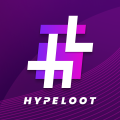Veuillez lire la clause de non-responsabilité et l'avertissement de risque.
AVERTISSEMENT & amp; AVERTISSEMENT DE RISQUE
Cette offre est basée sur des informations fournies uniquement par l'offrant et d'autres informations accessibles au public. L'événement de vente ou d'échange symbolique est entièrement indépendant de ICOholder et ICOholder n'y participe pas (y compris tout support technique ou promotion). Les ventes de jeton répertoriées par des personnes avec lesquelles ICOholder n'a aucun lien ne sont présentées que pour aider les clients à suivre l'activité qui se déroule dans le secteur global des jetons. Cette information n'est pas destinée à constituer un conseil sur lequel vous devriez compter. Vous devez obtenir des conseils professionnels ou spécialisés ou effectuer votre propre diligence avant de prendre, ou de vous abstenir, de toute action sur la base du contenu de notre site. Toutes les conditions et modalités conclues par les contributeurs à l'égard de l'acquisition de Tokens sont entre eux et l'émetteur du Token et ICOholder n'est pas le vendeur de ces Tokens. ICOholder n'a aucune responsabilité légale pour les déclarations faites par des tiers à l'égard de toute vente de jeton et toute réclamation pour rupture de contrat doit également être faite directement contre l'entité émettrice Token énumérés dans les présentes.
Si vous avez des questions concernant la nature, la propriété ou la légalité de cette vente symbolique ou des personnes impliquées, veuillez contacter info@icoholder.com avec des informations détaillées sur vos préoccupations.

























